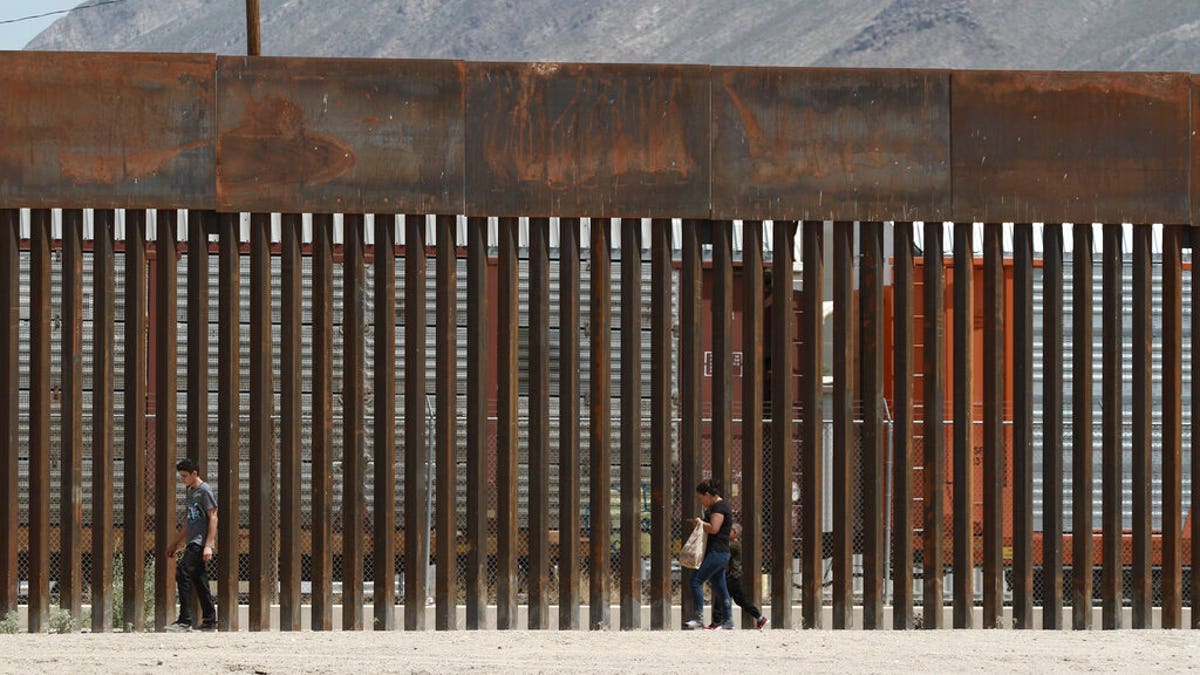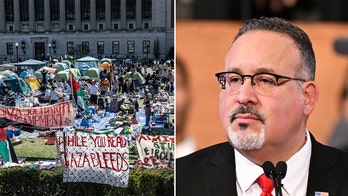Appeals court limits injunction on Trump asylum rule
A win for the White House as an appeals court sides with Trump administration on asylum rules and limiting the number of people who can cross the border and claim asylum.
The 9th Circuit Court of Appeals – long a liberal bastion that has been aggressively reshaped into a more moderate court by the Trump administration – handed the president a major win late Monday, lifting a nationwide injunction on his asylum policy.
Earlier in the day, Obama-appointed U.S. District Judge Jon Tigar in California had reinstated a nationwide halt on the Trump administration's plan to prevent most migrants from seeking asylum at the U.S.-Mexico border, if they first crossed through another country on the way.
But in an administrative order first obtained by Politico, the 9th Circuit rolled Tigar's ruling right back, saying that for now it should only apply to the confines of the 9th Circuit — which encompasses California, Arizona, Alaska, Hawaii, Montana, Nevada, Idaho, Guam, Oregon and Washington.
The San Francisco-based 9th Circuit now has seven Trump-appointed federal judges — more than any other federal appellate bench. The radical transformation of the court, which has 29 seats, is largely the result of Trump's push to nominate conservative judges and bypass traditional consultations with Senate Democrats.
TRUMP ADMIN ANNOUNCES MAJOR CRACKDOWN ON ASYLUM SEEKERS, CITING WIDESPREAD FRAUD
Thirteen of the 29 seats are now occupied by GOP-appointed judges. Last year, that number stood at six.
"Thanks to Trump, the liberal 9th Circuit is no longer liberal," The Washington Post noted earlier this year.

Mexican officials and United States Border Patrol officers return a group of migrants back to the Mexico side of the border on July 25, 2019. (AP Photo/Salvador Gonzalez, File)
Tigar first blocked the asylum policy in July after a lawsuit by groups that help asylum seekers. The 9th U.S. Circuit Court of Appeals then partially limited the impact of Tigar's injunction.
HOW HAS TRUMP REMADE THE ONCE-LIBERAL 9TH CIRCUIT?
That meant the policy was blocked in the border states of California and Arizona but not in New Mexico and Texas.
In his ruling Monday, Tigar circled back, and stressed a "need to maintain uniform immigration policy" and found that nonprofit organizations such as Al Otro Lado don't know where asylum seekers who enter the U.S. will end up living and making their case to remain in the country.
Tiger, citing new evidence, on Monday issued a second nationwide injunction.
"The court recognized there is grave danger facing asylum-seekers along the entire stretch of the southern border," Lee Gelernt, an attorney for the American Civil Liberties Union, said in a statement.
TRUMP EYES NEW OPPORTUNITY TO RESHAPE 9TH CIRCUIT
Trump said he disagreed with the judge's ruling, hours before the 9th Circuit backed him up late Tuesday and again limited the injunction.
"I think it's very unfair that he does that," Trump told reporters as he departed the White House for a trip to North Carolina. "I don't think it should be allowed."
White House Press Secretary Stephanie Grisham said in a statement that a sole judge shouldn't have the ability to exert such a broad impact on immigration policy, and noted the administration's request to the Supreme Court to set aside the injunction is still pending.

In this July 17, 2019 photo, three migrants who had managed to evade the Mexican National Guard and cross the Rio Grande onto U.S. territory walk along a border wall set back from the geographical border, in El Paso, Texas. (AP Photo/Christian Chavez, File)
"This ruling is a gift to human smugglers and traffickers and undermines the rule of law," she said.
The courts have halted some of Trump's key policy shifts on immigration, including an earlier version of an asylum ban. The president has prevailed on several fronts after initial legal setbacks, for example, when the Supreme Court recently lifted a freeze on using Pentagon money to build border walls.
BORDER ARRESTS PLUNGE AMID TRUMP-MEXICO CRACKDOWN
The rules issued by the Trump administration in July apply to most migrants who pass through another country before reaching the United States. They target tens of thousands of Central Americans fleeing violence and poverty who cross Mexico each month to seek asylum and would affect asylum seekers from Africa, Asia and South America who arrive regularly at the southern border.
The shift reversed decades of U.S. policy in what Trump administration officials said was an attempt to close the gap between an initial asylum screening that most people pass and a final decision on asylum that most people do not win.
U.S. law allows refugees to request asylum when they get to the U.S. regardless of how they arrive or cross. The crucial exception is for those who have come through a country considered to be "safe," but the law is vague on how a country is determined to be safe. It says pursuant to a bilateral or multilateral agreement.
People are generally eligible for asylum in the U.S. if they credibly fear return to their home country because they would be persecuted based on race, religion, nationality or membership in a particular social group.
The vast majority of asylum claims are denied, however, and the administration has said the system is being abused as a means of economic and humanitarian relief when it was intended to be used for limited and extraordinary cases.
Asylum claims have spiked since 2010, and there is currently a backlog of more than 800,000 cases pending in immigration court. Most asylum claims often fail to meet this high legal standard after they are reviewed by asylum judges, and only about 20 percent of applicants are approved.
The Border Patrol apprehended about 50,000 people at the southern border in August, a 30 percent drop in arrests from July amid summer heat and an aggressive crackdown on both sides of the border to deter migrants.
The drop was more significant than it was during the same period last year, however, in what officials called a clear sign that its recent agreement with Mexico to curb illegal immigration was working.
The 64,006 migrants apprehended or deemed inadmissible represents a 22 percent drop from July, when 82,055 were apprehended, and a 56 percent drop from the peak of the crisis in May, when more than 144,000 migrants were caught or deemed inadmissible. While the numbers typically drop in the summer, the plummet is steeper than typical seasonal declines.
Meanwhile, the number of caravans has also dropped. In May, 48 caravans of migrants were recorded coming to the U.S. In August, the tally was six. Border Patrol now has fewer than 5,000 migrants in custody, down from 19,000 at the peak in the spring.
“That international effort is making an impact. Mexican operational interdiction is certainly [the] highlight of that effort, but the shared responsibility we’re seeing in the region, governments stepping up and saying we also own this,” Homeland Security Secretary Kevin McAleenan told Fox News on Monday.
A senior administration official also said, "the tariff threat with Mexico changed the dynamic significantly with our partners."
Fox News' Adam Shaw and The Associated Press contributed to this report.







